The Incredible shrinking Polymer
What Is Happening in Soils as Plastics Transform into Ever Smaller Pieces?

Plastics have been so ubiquitous in our lives for so long that it’s hard to imagine our world without them. In agriculture, they are so widespread and invaluable that the term plasticulture was coined to describe them. But as we produce hundreds of millions of tons of plastic products every year, they are piling up all around us, albeit in often unrecognizable or invisible forms. Although more conspicuous ocean plastics raised louder alarms initially, the pollution beneath our feet and among our crops has drawn the scrutiny of more and more soil scientists. In this article, we hear from some of the researchers examining how plastics impact soils and crops as they degrade from plastic mulch, masks, and latte cups into new and smaller forms.
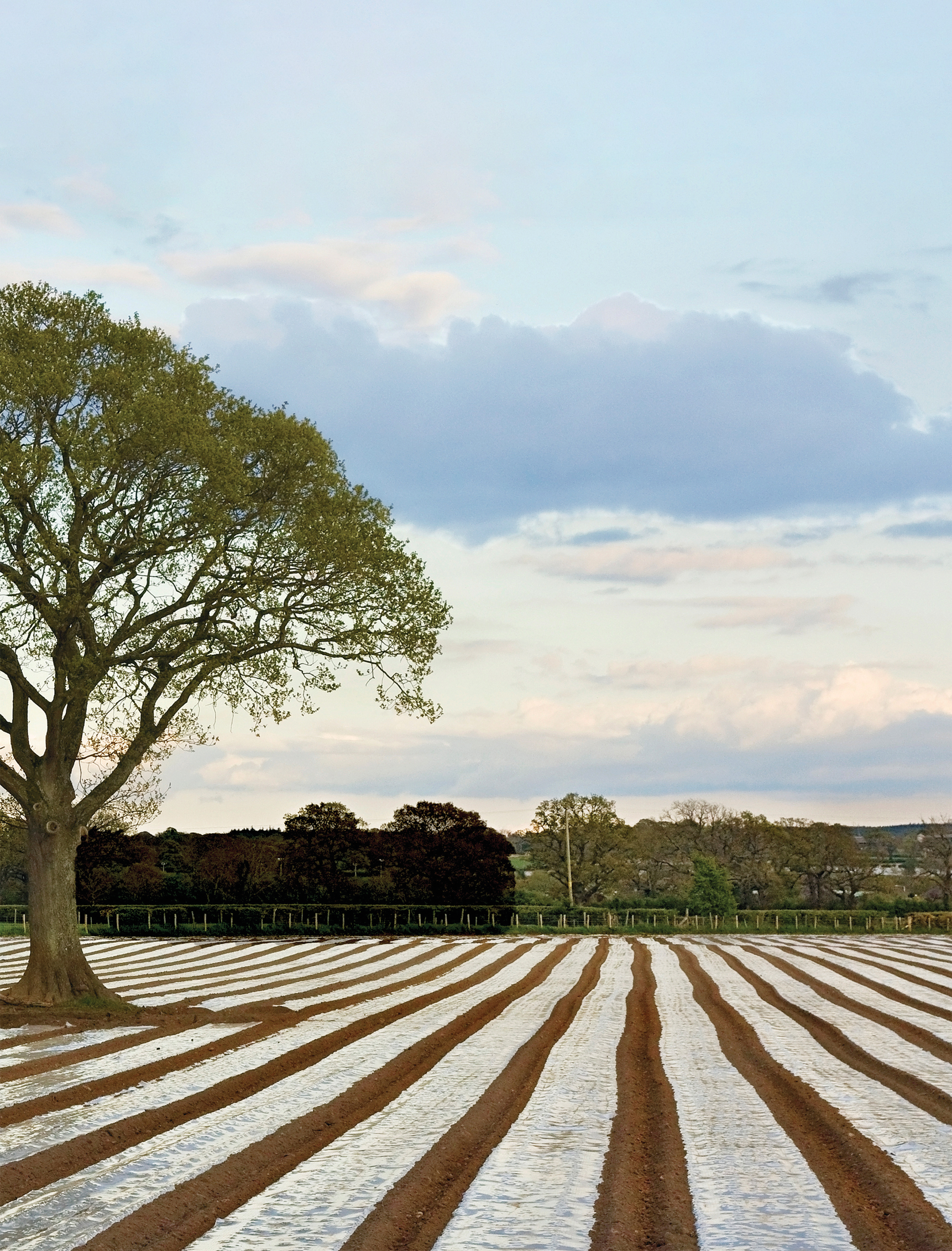
accumulation in soils have raised questions about its fateand impact on the environment and crops. Photo courte-
sy of AdobeStock/stocksolutions.
Home to wineries, fruit farms, and California State Polytechnic University, San Luis Obispo offers beautiful vistas of the Santa Lucia Mountains to the east. If you want more of a beach scene, you have to head west a dozen miles to the Pacific. Still, Cal Poly soil ecologist Seeta Sistla sees a seascape of sorts right from town when she gazes out on those fields of fruit. “It looks like an ocean of plastic here on the Central Coast,” she says. Specifically, that’s low-density polyethylene undulating over those crops, keeping soils moist and weeds and pests in check. But as scientists have been reporting for years, there’s a flip side to plasticulture, as the agricultural use of these plastic mulches, irrigation equipment, and greenhouses are known. Not all plastic mulch gets removed at the end of the growing season, and what’s left behind impairs soils.
Soil scientists can be forgiven for having a communal chip on their shoulders when it comes to plastics. For decades, attention focused on plastic pollution in the ocean. There, “You can see it and extract it easily,” explains soil scientist and SSSA Fellow Markus Flury, whose group at Washington State University (WSU) has studied microplastics extensively. But there are likely more microplastics in soils, he says, than in the sea. Soil scientists are working to catch up with marine scientists, says University of Tennessee (UT) soil scientist and Society member Sean Schaeffer, but still lack important measurement standards. “We are borrowing a lot of methods from the aquatic literature because they are years ahead of us in microplastic research,” he says, “and those methods may not be ideal for soil scientists.”
In this article, we’ll meet a few of the researchers making up some of that lost, plastic-tainted ground. Their work is all the more important as global warming threatens to increase demand for moisture preserving plastic mulch and pandemics add more plastics to a global waste stream that already totals about 400 million tons a year. (Some 25 billion polypropylene face masks were manufactured globally in 2020 alone, Flury says.) These researchers apply a range of techniques to study everything from degradation rates, how plastics interfere with water uptake, how plants take up the plastic particles themselves, and the performance of biodegradable alternatives. The scientists have their work cut out for them. As mulch and other plastics weather and break down, their properties and effects on the environment change as well. Each step—original product, macroplastics, microplastics, and nanoplastics—presents different research challenges as we’ll see as we walk through that metamorphosis step by step.
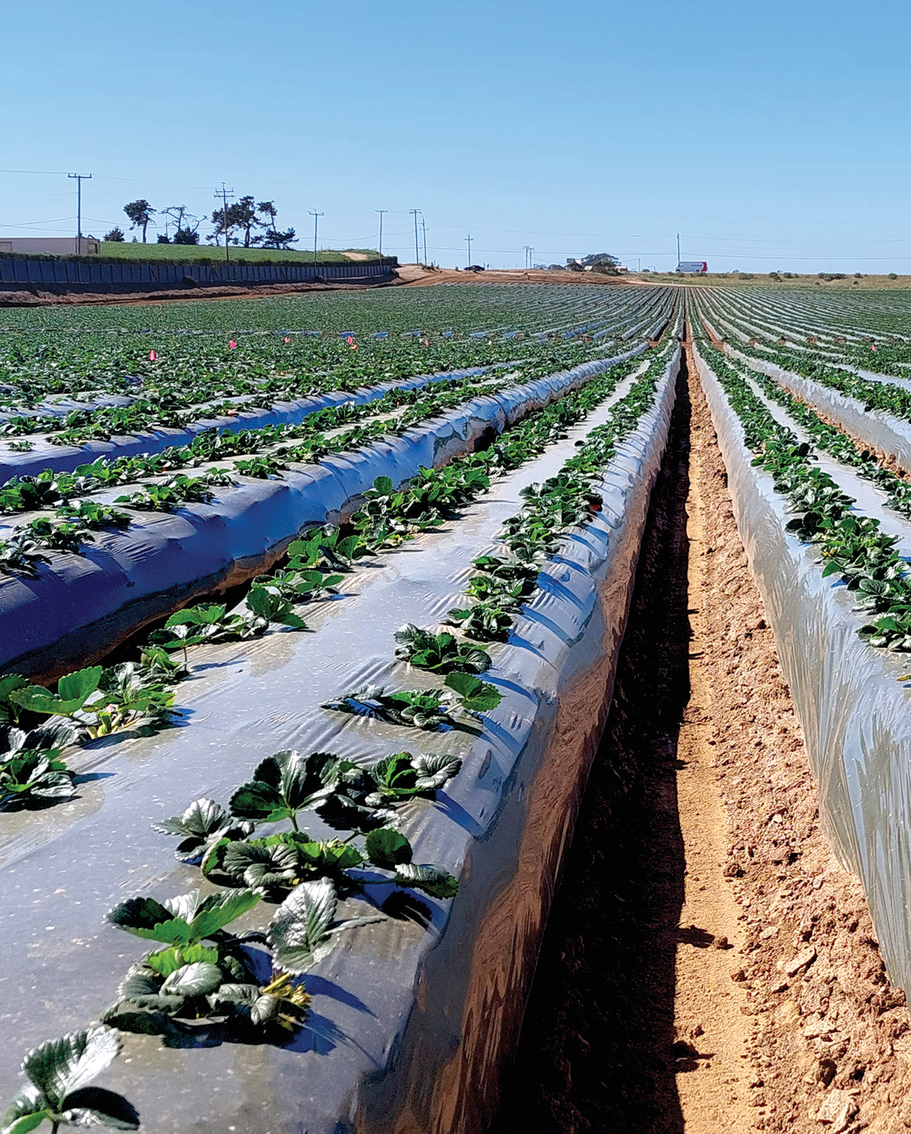
near San Luis Obispo. Photo by Sean Schaeffer.
The Rap Sheet on Plastic Films
We’ve been using plastics in one form or another for well over a century, with widespread industrial production starting in the 1950s. Durable, cheap, light, inert, and moldable, the stuff has infiltrated almost every industry and the most remote corners of the earth. “We live in a plastic age, basically,” Flury says. One big science challenge is figuring out where any particular piece of plastic comes from. Did it have a former life as plastic mulch? As a microbead from facewash? As a Coke bottle cavalierly flung out a car window? Determining provenance is challenging, says UT’s Schaeffer, leaving some scientists to measure more obvious, if less important, attributes. At UT, one student studying microplastics in snails categorized the particles by color: Most were blue with an uptick in orange—the school color—in gastropods on campus.
“What does that mean?” Schaeffer asks. “That's what we're doing because that's what we can do. But that's not very helpful.”
While scientists are working out the particulars of provenance, the basic plot of this story is well known. On agricultural fields, some plastics arrive via biosolids in particles we’ve already ingested and excreted. Indeed, almost any soil amendment—including organic compost, organic fertilizer, poultry litter, and even biochar produced at high temperatures—contains some microplastics. This is according to University of Massachusetts Amherst (UMass) Ph.D. student and Society member Anahita Khosravi, who presented preliminary findings from an in-depth analysis of samples at the Societies’ 2022 Annual Meeting. “You cannot avoid the plastics,” she says.
Plastics also make their way to the soil via landfills and personal care products that end up in the water supply. But plastic mulch, good for just one growing season and difficult to recycle, has become a major contributor of plastic to agricultural soils. In China, for example, use of plastic mulch grew from 6,000 tons on 117,000 hectares in 1982 to about 1.5 million tons on 18.4 million hectares in 2016, according to national statistics cited in a 2017 study. On the southeastern tip of Spain, one of the highest concentrations of greenhouses in the world, miles of wall-to-wall plastic can be seen from space.
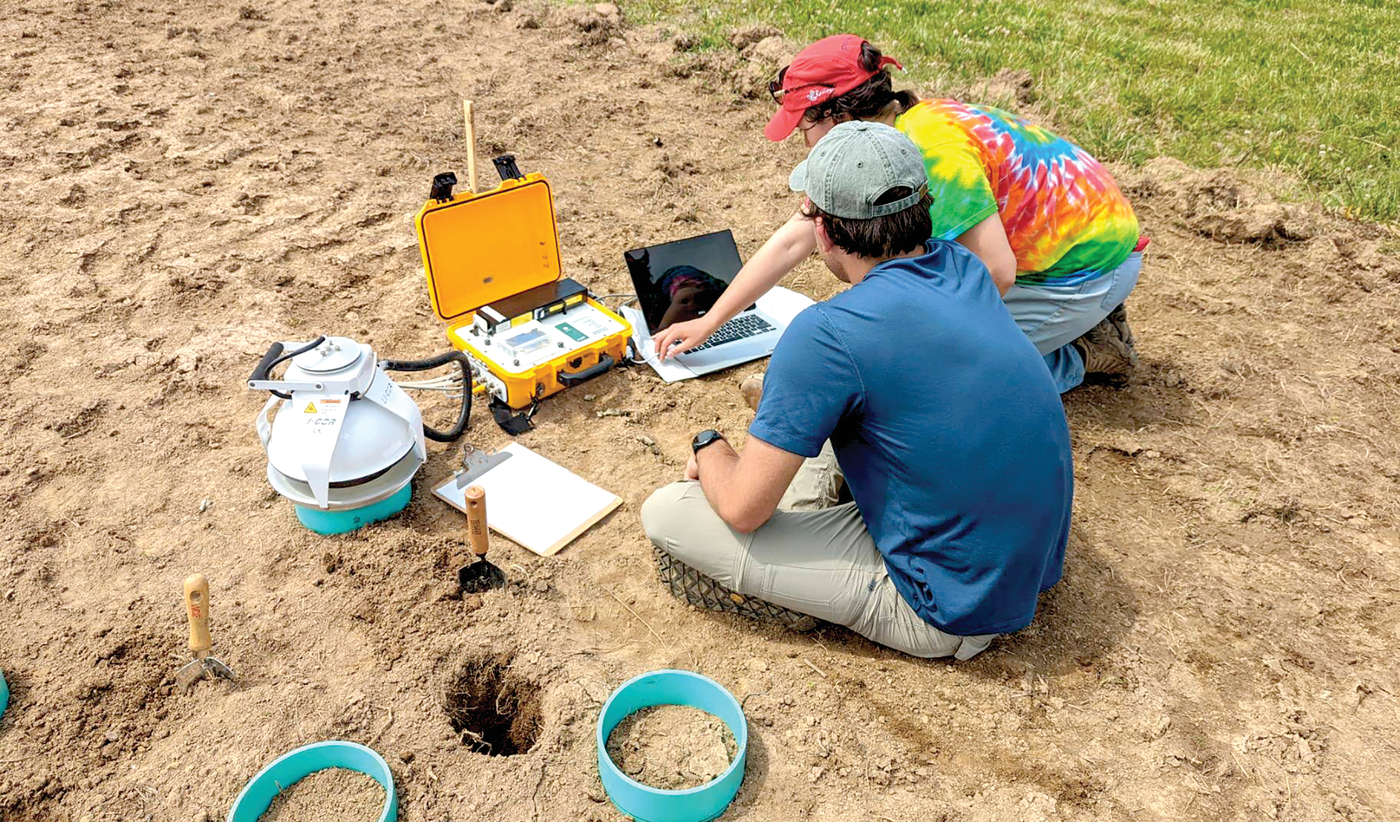
field sites as part of their research on degradation rates of biodegradable mulch. Photo by Morgan Isaacs.
Driving the popularity of plastic mulch are hefty crop yields, which spike 25–42% during the season it is used, according to a 2020 global meta-analysis published in Global Change Biology. “This incorporation of plastic into agriculture has become extremely widespread globally,” says Sistla, “and strawberries are a crop that really relies on plasticulture, at least in the western U.S. We haven't been able to identify a single strawberry producer who doesn't use plastic.” But after serving their purpose, plastics go from benefit to bane. Some may be improperly disposed of or disced back into the soil. Even when removed from fields after harvest as intended, clumps get left behind. As the material degrades, according to the Global Change Biology analysis, its negative impacts start piling up, including on yield, plant height, root weight, soil water evaporation capacity, soil water infiltration rate, soil organic matter, and soil available phosphorus. Our story continues with a look at this first step in plastic mulch degradation: from sheet to macroplastic, which commonly refers to fragments larger than 5 mm.
A Macro Surprise
Sistla is drawn to a wide range of questions about soils and global environmental change. Among other topics, her current work looks at fire as a driver of biogeochemical change in the Arctic and the ecological implications of solar field development. Plastics hadn’t been part of the portfolio until relatively recently when she and master’s student Olivia McKay noticed the preponderance of plastic poking out of the fields while conducting other research. “It came from curiosity,” Sistla recalls. “We asked, ‘How much is there? What does it do to the soil system? What does it do across scales?’” So the pair conducted a study comparing soil adhered to shreds of macroplastic debris to bulk soil from the same field where conditions had been dry. What they saw in the plastic-exposed soils was unexpected: Microbes were more active there than in the unexposed soil. It could be, Sistla hypothesizes, that tiny amounts of water collected in the soil aggregates attached to the hydrophobic plastic scraps, creating a more favorable microhabitat—microbe oases within the plastic debris.
“The water has to go somewhere,” Sistla says. “So, it is possible that there's a slightly higher water content, slightly more stuck-together soil gloms, and that is supporting these microsite differences that are allowing the microbial community to be a little bit more active in those areas versus the bulk soil.” The results underscore the complexity of plastic’s effect on soils as they break down from one size, shape, and chemical composition to another.
Around the time Sistla was investigating water and macroplastics in California, Andreas Cramer of the Swiss Institute of Technology (ETH) in Zurich was investigating a related topic at the micro-scale. As a soil physicist, Cramer approached the problem from a different angle, literally: He measured the contact angle of monolayers of microplastic fragments mixed with glass beads. In a first-of-its-
kind measurement, he and his colleagues also used neutron beams to observe and analyze the labyrinthine path water must take through soil when microplastics block the way.
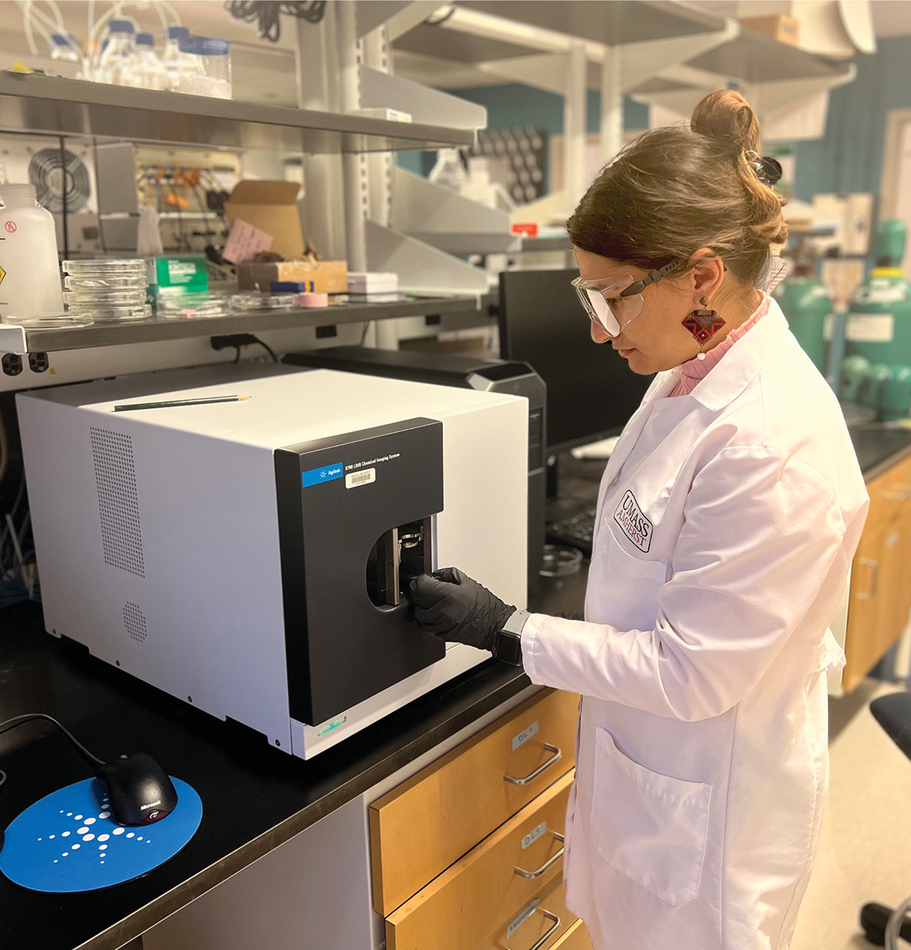
A Micro Obstacle Course
A Ph.D. student at ETH, Cramer is part of a European team, funded by a multiyear German Research Foundation grant, investigating the mechanisms, biological effects, transport, and formation of microplastics. Cramer’s contribution: learning how microplastics—particles commonly defined as between 100 nm and 5 mm—affect water dynamics in soils and how their interaction with water affects their transport. As he and his collaborators considered how to best tackle the question, they decided against working with soil from the field: The act of collecting samples would compromise critical spatial information. “To find the microplastic, you have to destroy the soil structure, so you had no idea where the microplastic was,” Cramer explains. “We thought about a different approach by preparing our own samples and a simplified matrix.”
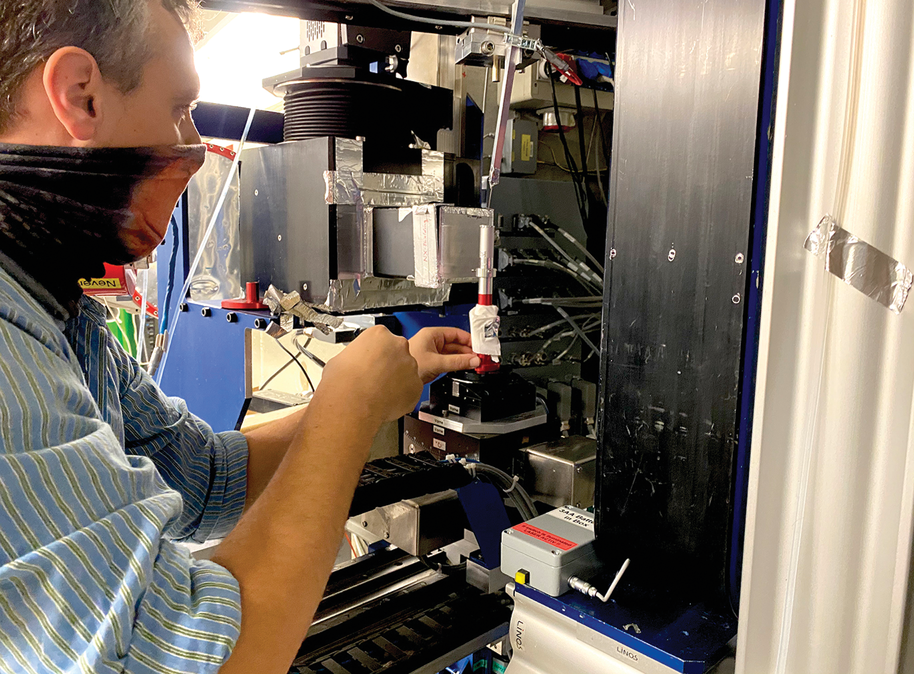
The team settled on sand and glass beads as stand-ins for soil in their experiments and had microplastics of different sizes and contents fabricated for their tests. Aluminum containers packed with various mixtures of microplastics and artificial soil simulated the soil environment. The questions: How would the amounts of microplastics impact both water saturation and how far and fast water would rise? “You have wettable surface areas on the soil and you have a non-wettable surface area by the soil, represented by microplastic,” Cramer explains. “It’s all a story about wettable surfac to non-wettable surface.”
As recently reported in the Vadose Zone Journal (https://doi.org/10.1002/vzj2.20215) as part of a special section titled, “Emerging Particles and Biocolloids in Terrestrial and Aquatic Systems," the team conducted a series of tests. But for the most detailed simulation, they toted their samples to the nearby Paul Scherrer Institute’s Laboratory for Neutron Scattering and Imaging. Bombarding their set-up with neutrons produced images that differentiated microplastics, sand, and water in different shades of gray. In a video clip produced from those images, water twists and turns around the plastic obstacle course as it snakes its way up the container.

“I was pretty surprised that the speed of imbibition was lowered significantly by microplastics,” Cramer reports. “I had two different contents of microplastic in my samples, and every content lowered the imbibition.” Striking in and of themselves, the images also hid a wealth of data for anyone with the patience to mine it. That became Cramer’s COVID project: He spent more than a year unpacking the information hidden within each of the millions of pixels, creating a huge data set to look at water in relation to microplastic.
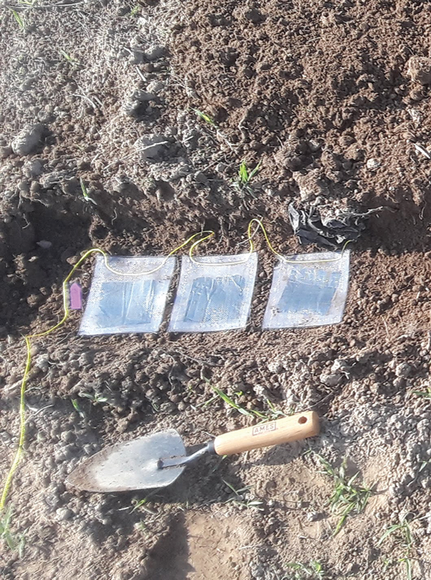
The upshot of all that data is this: In normal soil, depending on its grain size, it can be hard for water to reach the top. The higher it rises, the tougher it gets. Throwing in microplastics compounds this effect and can create water-excluding air pockets.
“First, I looked at the videos, and the only difference I was able to observe was that water took a longer time to get to the top of the sample,” Cramer explains. “But by looking at each pixel, the
severity of the impact was kind of surprising. I was not expecting these clear results.” The effect was clear even in samples where microplastics made up just 1% of the particles. Cramer is now conducting similar studies that add more complexity, including looking at microplastics coated with iron.
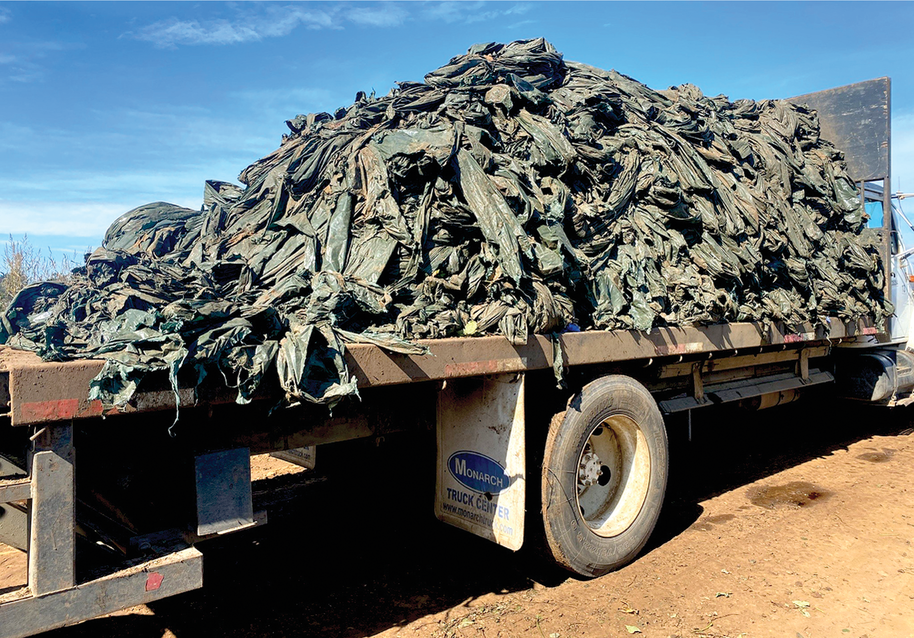
Another postdoc, Society member Yingxue Yu of Flury’s group at WSU, has also observed how microplastics compromise soil’s capacity to hold water. In recent findings presented at the Societies’ 2022 Annual Meeting, Yu reported that fibrous microplastics, by rearranging soil structure, affect soil hydraulic properties more than granular microplastics. The work adds to the growing body of knowledge on how micro- and nanoplastics move through soils, as highlighted recently in Vadose Zone Journal (https://doi.org/10.1002/vzj2.20108).
When microplastics fragment further, another problem arises: Do plants take up the plastic particles themselves, and if so, how much? The question brings us to the next stop on our petrochemical peregrination: nanoplastics.
Toward the Nanoverse—and Beyond
When WSU Ph.D. student and Society member Kaushik Adhikari, another member of Flury’s group, began researching plastics uptake in plants, he found mixed answers in the literature. He hopes to shed new light on the question—fluorescent light, to be specific—using confocal microscopy. Adhikari started his experiments with nanoplastics of different sizes coated with a fluorescent substance. He added them to a medium of agar, planted seeds in the mix, and five days later, extracted the roots that had emerged. He then used confocal microscopy to image cross-sections
and tips of those roots, a technique that would highlight any fluorescent nanoplastics that may have accumulated around the tip or been taken up inside the root itself.
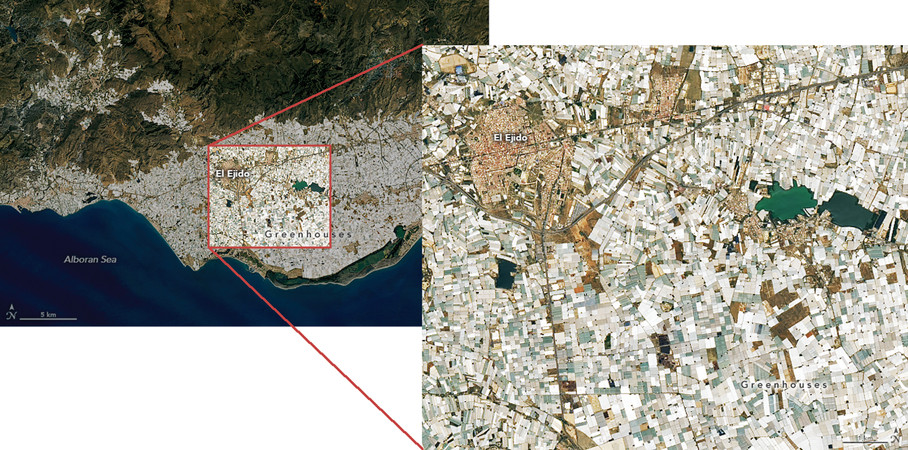
During a presentation on his preliminary findings at the Societies’ 2022 Annual Meeting, Adhikari displayed images with fluorescent signals that reveal nanoplastics adhering to root tips and accumulating in the epidermis and endodermis. Still, he says it is too soon to know what those signals are telling us—but he’s working on it: “More is still to be done to draw a conclusion regarding nanoplastics’ uptake.”
While scientists like Cramer and Adhikari work to better understand plastics already in soils, other research focuses on curbing plasticulture to begin with. Schaeffer’s group at UT studies biodegradable mulch (BDM), an alternative to plastic designed to break down faster. Unlike plastic mulch, BDM is meant to be tilled after each season and left to biodegrade in the field, a process Schaeffer’s team is examining. Ph.D. student and Society member Alexis Gillmore is using nuclear magnetic resonance to measure biodegradation rates over years by tracking the chemical fingerprint of specific polymers in the BDM material PBAT (polybutylene adipate co-terephthalate).
“Even though these products are fully biodegradable,” Schaeffer explains, noting that they meetinternational standards for biodegradability, “they typically do not completely degrade within a year,
and if you're reusing these materials on a field every year, you're going to have some accumulation.”
Gillmore’s research is shedding light on how quickly BDM actually breaks down. With Cal Poly and WSU collaborators, the UT group is conducting field tests to better pinpoint those rates, which can vary by climate and soil conditions.
“We are looking to see how it affects the soil environment, how it affects plant productivity, how farmers like it,” Cal Poly’s Sistla says. “Because a lot is going to be based on what farmers want to use and whether it's cost effective or not. So far, our results suggest that it's very durable in the field.”
Farmers have been slow to adopt BDM: It costs significantly more than conventional plastic mulch, Schaeffer says, although that doesn’t account for savings from not having to remove or landfill
plastic sheets. Still, there are indications that producers are increasingly worried about the damaging effects of plastics in their soils. Disputes over plastic debris in fields have been ending up in court, according to Mary Beth Kirkham, a distinguished professor at Kansas State University and Fellow of all three Societies who submitted a poster on the topic at the Societies’ 2022 Annual Meeting. In one case, an Indiana landowner sought restitution (unsuccessfully) after a tenant farmer disced plastic mulch into her fields.
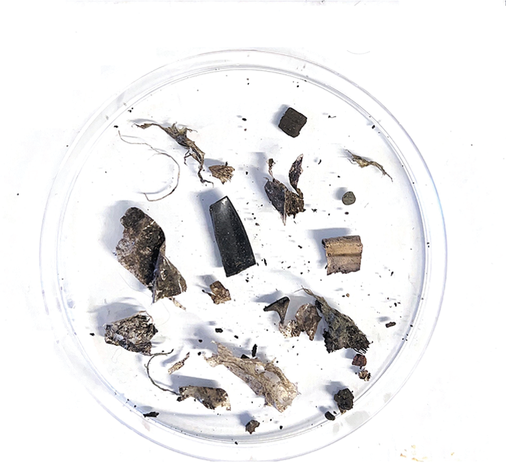
Farmers concerned about plastics should do their homework on what they add to their soils, cautions UMass’s Khosravi. As noted earlier, her study measuring microplastics in organic fertilizer and compost in Massachusetts found microplastics in all samples, despite waste management and composting regulations that are relatively strict there. Among her samples, organic fertilizers made of blood meal, feather meal, and bone meal had the most microplastic particles while poultry litter had the least. Compost samples collected closer to Boston had more than those in the rural west.
The most common microplastic she is finding is polyamide, used in clothing in textiles. To her, the message is clear: Let the farmer beware. “This is the most important thing that I wanted to share,” Khosravi says, “that if farmers want to purchase compost, they better know the source and they better know the procedure and how they make the compost.” Some facilities decline to share samples, she says, concerned at how much microplastics she will find.
Research on the source, fate, and human health effects of microplastics is key, Khosravi says. But she has seen enough data at this point to recognize the critical need to stem the plastic tide. ”Plastics are everywhere,” she says. “The next step is to focus on how to decrease this contamination in the land.”
Dig Deeper
Vadose Zone Journal Articles
“Microplastic Induces Soil Water Repellency and Limits Capillary Flow”:
https://doi.org/10.1002/vzj2.20215
“Current Understanding of Subsurface Transport of Micro- and Nanoplastics in Soil”:
https://doi.org/10.1002/vzj2.20108
2022 Annual Meeting Presentations
“Identification and Characterization of Microplastics in Organic Fertilizers”: http://bit.ly/3Vj70bB
“Effects of Microplastics on Soil Hydraulic Properties”: http://bit.ly/3ONSMNz
“Interaction and Uptake of Polystyrene Microplastics in Plants”: http://bit.ly/3FcervL
“Problems from Plastics Used in Agriculture”: http://bit.ly/3inGZJO
Text © . The authors. CC BY-NC-ND 4.0. Except where otherwise noted, images are subject to copyright. Any reuse without express permission from the copyright owner is prohibited.











